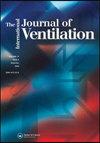冲击射流通风与置换通风室内环境差异的实验研究
IF 1.5
4区 工程技术
Q3 CONSTRUCTION & BUILDING TECHNOLOGY
引用次数: 13
摘要
摘要撞击式射流通风(IJV)系统是一种新的气流组织策略,有望克服混合通风(MV)系统和置换通风(DV)系统的缺点。混合通风系统是应用最广泛的通风系统,置换通风系统的空气质量优于置换通风系统。本研究的目的是积累IJV的基本特征,提出一种用IJV预测室内环境的简单方法。为了研究IJV的特征,在气候室中进行了全尺寸实验。研究了不同的通风系统和送风条件,以及室内热环境和通风效果。对于合资企业,室内环境与供给动量小的DV相似,与供给动量大的MV相似。通过定义具体的阿基米德数来表达供给动量和浮力之间的平衡,阿基米德数可以通过设计条件计算得到。最后给出了阿基米德数与热环境指标和通风效率指标之间的相关性。本文章由计算机程序翻译,如有差异,请以英文原文为准。
Experimental investigation of difference in indoor environment using impinging jet ventilation and displacement ventilation systems
Abstract The impinging jet ventilation (IJV) system has been proposed as a new air distribution strategy and is expected to overcome the disadvantages of mixing ventilation (MV) system, which is the most widely used system, and displacement ventilation (DV), which provides better air quality than MV. The aim of this study is to accumulate the fundamental feature of IJV and to propose a simple method to predict the indoor environment with IJV. Full-scale experiments were conducted in a climate chamber, in order to investigate the features of IJV. Different ventilation systems and supply air conditions were investigated along with indoor thermal environments, and ventilation effectiveness. For IJV, the indoor environment was similar to that of DV with small supply momentum, and was similar to that of MV with large supply momentum. The specific Archimedes number, which can be calculated by design conditions, was defined to express the balance between the supply momentum and buoyancy force. The correlation between the Archimedes number and indices for thermal environment and ventilation effectiveness are finally shown as prediction method.
求助全文
通过发布文献求助,成功后即可免费获取论文全文。
去求助
来源期刊

International Journal of Ventilation
CONSTRUCTION & BUILDING TECHNOLOGY-ENERGY & FUELS
CiteScore
3.50
自引率
6.70%
发文量
7
审稿时长
>12 weeks
期刊介绍:
This is a peer reviewed journal aimed at providing the latest information on research and application.
Topics include:
• New ideas concerned with the development or application of ventilation;
• Validated case studies demonstrating the performance of ventilation strategies;
• Information on needs and solutions for specific building types including: offices, dwellings, schools, hospitals, parking garages, urban buildings and recreational buildings etc;
• Developments in numerical methods;
• Measurement techniques;
• Related issues in which the impact of ventilation plays an important role (e.g. the interaction of ventilation with air quality, health and comfort);
• Energy issues related to ventilation (e.g. low energy systems, ventilation heating and cooling loss);
• Driving forces (weather data, fan performance etc).
 求助内容:
求助内容: 应助结果提醒方式:
应助结果提醒方式:


